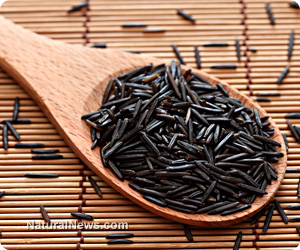Health Benefits of White Rice
Two reasons: What’s being served with it and how it’s processed. Polished white rice is stripped of all the nutrients that make it a worthy and viable source of nutrition. That’s why a lot of the white rice in the stores are vitamin fortified because the polished rice is nothing more than refined starch. Natural, unpolished white rice has many health benefits including:
- Protein – for every 150g, rice has about 5 grams of protein
- Gastrointestinal – Because it’s low in fiber and easily digested, white rice is great for relieving diarrhea and even morning sickness
- Muscle building – Muscles need amino acids to grow and rice is a great source
- Overall energy – the body needs carbohydrates to function and white rice is an excellent source.
Benefits of Brown Rice
- Fiber – it’s an excellent source of dietary fiber which helps to keep the colon healthy
- Manganese – Keeps bones healthy and helps the people with insulin resistance maintain healthy blood sugar levels
- Selenium – found in nuts, selenium helps to counter the effects of free radicals.
- Magnesium – like manganese, it promotes health bones but it also helps with proper blood circulation
Brown rice is more nutritionally dense and has a flavor that some people don’t like; instead of boiling in water, some choose broth or even coconut milk.
So what is black rice?
Of all three, black rice is the least known and least prevalent but its benefits are profound. Rice is a versatile food with many health benefits that’s a great source of energy. It goes well with a most forms of protein like fish, meats, beans and vegetables so it can be doctored. At the end of the day, the kind of rice you prefer depends on many factors including flavor and taste.
Source: http://comluv.com/the-health-benefits-of-white-rice-vs-brown-rice-vs-black-rice/
ources for this article include:
http://www.behealthyandwell.com
http://www.greenmedinfo.com
http://www.independent.co.uk
ources for this article include:
http://www.behealthyandwell.com
http://www.greenmedinfo.com
http://www.independent.co.uk

 Put simply, organic farming is an agricultural system that seeks to provide you, the consumer, with fresh, tasty and authentic food while respecting natural life-cycle systems.
Put simply, organic farming is an agricultural system that seeks to provide you, the consumer, with fresh, tasty and authentic food while respecting natural life-cycle systems.